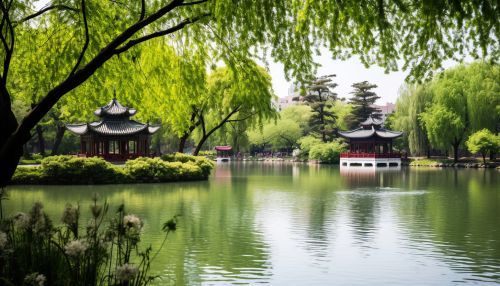Tsinghua University
History
Tsinghua University, located in Beijing, China, is one of the oldest and most prestigious universities in the country. It was established in 1911 as a preparatory school for students who were to be sent by the government to study in the United States. The university was named "Tsinghua" because it was built on the site of the former Qing Dynasty royal garden, the "Qing Hua Yuan" or "Garden of Clear Springs".


The university began offering undergraduate degrees in 1925 and graduate degrees in 1929. During the Second Sino-Japanese War, Tsinghua University, along with Peking University and Nankai University, merged to form the National Southwestern Associated University, located in Kunming. After the war, Tsinghua moved back to its original campus in Beijing and resumed its operation as an independent institution.
In the 1950s, Tsinghua University was reshaped significantly by the government's decision to make it a multidisciplinary institution focused on training high-level personnel for the country's burgeoning scientific and technological sectors. This marked the beginning of Tsinghua's transformation into a comprehensive research university.
Academics
Tsinghua University is renowned for its rigorous academic programs and its commitment to research. The university is organized into 20 schools and 57 departments, offering a wide range of undergraduate and graduate programs in various fields of study, including natural sciences, engineering, humanities, social sciences, medical science, and management.
The university is particularly well-known for its programs in engineering and computer science. Tsinghua's School of Engineering is consistently ranked among the top engineering schools in the world, and its Department of Computer Science and Technology is recognized as a leading institution in the field of computer science in China.
Tsinghua University also boasts a strong faculty, many of whom are leading experts in their respective fields. The university has a high faculty-to-student ratio, ensuring that students receive personalized attention and guidance in their studies.
Research
Research is a major focus at Tsinghua University. The university is home to more than 200 research institutions and research centers, including the Tsinghua National Laboratory for Information Science and Technology, the Institute for Interdisciplinary Information Sciences, and the Center for Earth System Science.
Tsinghua University is also a member of the C9 League, a consortium of top Chinese universities that aims to promote collaboration in research and education among its members. The university is also part of the Association of Pacific Rim Universities, a network of leading research universities around the Pacific Rim.
Campus
The Tsinghua University campus is located in the Haidian District of Beijing, in close proximity to several other major universities. The campus covers an area of 392 hectares and is known for its beautiful gardens, traditional Chinese architecture, and modern facilities.
The campus is home to a number of notable buildings and landmarks, including the Old Gate, the Grand Auditorium, and the Tsinghua University Art Museum. The university also has a number of sports facilities, including a stadium, a gymnasium, and a swimming pool.
Student Life
Tsinghua University has a vibrant student life, with a wide range of extracurricular activities and student organizations. The university hosts a number of cultural and academic events throughout the year, including the Tsinghua University International Cultural Festival and the Tsinghua University Science and Technology Expo.
The university also offers a variety of services to support students, including counseling services, career services, and health services. The university's libraries, with their extensive collections and modern facilities, are a major resource for students.
Notable Alumni
Tsinghua University has produced many notable alumni who have made significant contributions to various fields. These include former Chinese President Hu Jintao, current Chinese President Xi Jinping, and Nobel laureate in Physics, Yang Chen Ning.
